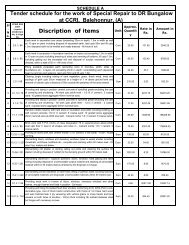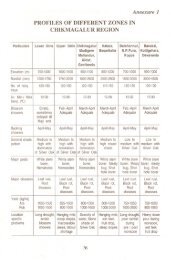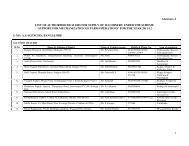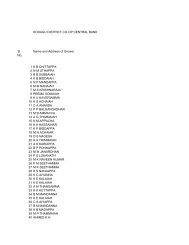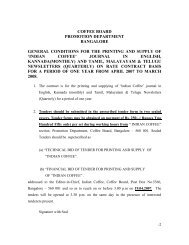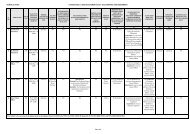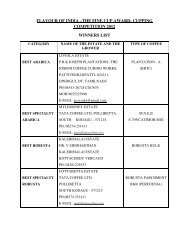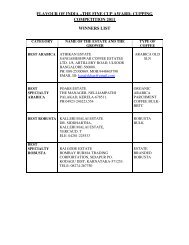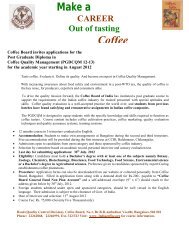COFFEE CULTIVATION GUIDE - Coffee Board of India
COFFEE CULTIVATION GUIDE - Coffee Board of India
COFFEE CULTIVATION GUIDE - Coffee Board of India
You also want an ePaper? Increase the reach of your titles
YUMPU automatically turns print PDFs into web optimized ePapers that Google loves.
9. <strong>C<strong>of</strong>fee</strong> Effluent Management<br />
Letting out <strong>of</strong> untreated c<strong>of</strong>fee effluent to natural water streams or to open<br />
lands is environmentally unsafe as it causes water and land pollution. Use <strong>of</strong> untreated<br />
c<strong>of</strong>fee effluent for irrigation is also prohibited by the law. Since, c<strong>of</strong>fee processing<br />
coincides with the dry season when amount <strong>of</strong> water present in the natural streams is<br />
at the minimum, causing further concern <strong>of</strong> higher degree <strong>of</strong> pollution.<br />
The c<strong>of</strong>fee effluents emanating from the pulper units are highly acidic and contains<br />
high amounts <strong>of</strong> dissolved and suspended biodegradable organic matters. These<br />
effluents, if discharged into natural water bodies without treatment, pollute the<br />
receiving bodies by depleting dissolved oxygen present in it. Polluting natural water<br />
bodies will have an adverse effect on domestic users, aquatic life, livestock and water<br />
course down the stream. The pollution load <strong>of</strong> c<strong>of</strong>fee effluent is measured in terms <strong>of</strong><br />
Biological Oxygen Demand (BOD) and Chemical Oxygen demand (COD).<br />
Depending on the quantity <strong>of</strong> water used to process one unit <strong>of</strong> clean c<strong>of</strong>fee (1 M.T),<br />
the BOD and COD amounts vary in the effluent. The amount <strong>of</strong> BOD range between<br />
8000 and 13,000 ppm and the COD levels will be around two times <strong>of</strong> the BOD<br />
present in the effluent. One should note that BOD levels will increase if pulped water<br />
is recycled during the processing.<br />
In order to protect the environmental health and to control the pollution on<br />
account <strong>of</strong> polluted water reaching the natural water bodies, agricultural land and<br />
open spaces, Central Pollution Control <strong>Board</strong> (CPCB), Government <strong>of</strong> <strong>India</strong> has<br />
imposed certain laws and guidelines for handling effluents. These guidelines have to<br />
be followed mandatorily failing which the person is severely punishable under the<br />
law. As per the CPCB statute, the water to be used for irrigation should not contain<br />
more than 100 ppm <strong>of</strong> BOD and water to be discharged to natural water bodies should<br />
not contain more than 30 ppm <strong>of</strong> BOD. Since, c<strong>of</strong>fee effluent contains more than the<br />
stipulated levels <strong>of</strong> BOD and COD, it has to be treated by following recommended<br />
methods <strong>of</strong> treatment before use in the field or discharging it to the streams.<br />
Steps to be followed in the treatment <strong>of</strong> <strong>C<strong>of</strong>fee</strong> Effluent<br />
36<br />
• All the fruit skin shall be cleanly separated from the pulped water using<br />
suitable screens<br />
• The c<strong>of</strong>fee effluent coming out <strong>of</strong> the washer unit should be stored in a lagoon<br />
for one day. The capacity <strong>of</strong> this lagoon shall be <strong>of</strong> one day’s water use<br />
capacity <strong>of</strong> the processing unit.<br />
• This effluent should be neutralized with appropriate amount <strong>of</strong> Agricultural<br />
lime so that the pH <strong>of</strong> the effluent is around 6.9 to 7.0. Generally 5 grams <strong>of</strong><br />
good liming material is adequate to neutralize 0ne litre <strong>of</strong> the effluent.<br />
• After one day <strong>of</strong> storage, the effluent is allowed to the anaerobic lagoon.<br />
Before allowing the effluent to the lagoon, the anaerobic lagoon should be<br />
charged with 4% cow dung slurry up to 10% <strong>of</strong> the capacity <strong>of</strong> the lagoon.<br />
Charging <strong>of</strong> the anaerobic lagoon should be done one month before the<br />
pulping operation starts so that the methogenic bacteria present in the cow<br />
dung slurry which are responsible for the degradation <strong>of</strong> the biological<br />
materials get stabilized. The capacity <strong>of</strong> the anaerobic lagoon should be<br />
equivalent to 21 days effluent production with a maximum depth <strong>of</strong> 3 metres.<br />
36



